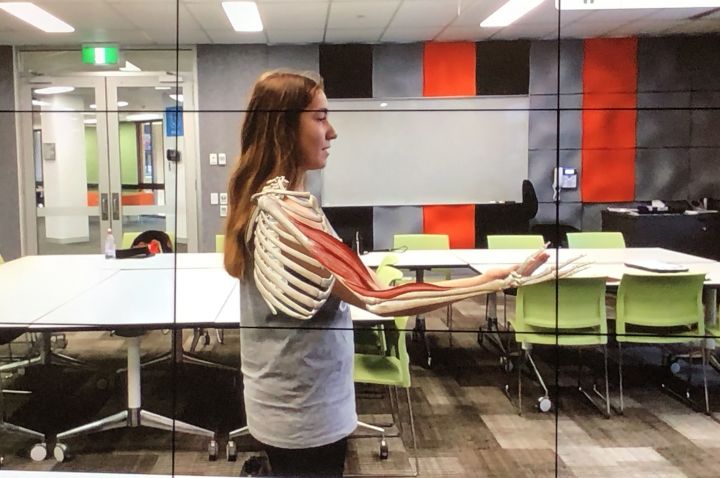In Australia, University Students Using Virtual Reality and Augmented Reality to Learn Anatomy
Could virtual reality and augmented reality replace textbooks in the classrooms of the future? One Australian university is already ahead of the curve.
La Trobe University in Australia is now deploying virtual reality and augmented reality in helping students learn about human anatomy. The pilot program offers a 12-week AR-powered learning program.

This is the latest sign that XR technologies are creeping into the learning environment in a very practical sense. The pilot program of the technology is meant to help students boost their spatial awareness, explorative learning and accessibility.
The augmented reality application offers students a 24-hour access to three-dimensional anatomy images via their phones, iPad or computers. On campus, virtual reality headsets will be used to offer students access to virtual reality technology.
Augmented reality technology enables students to not only visualize but also manipulate the anatomical structures and therefore develop a deeper understanding of the human anatomy. Students can even superimpose anatomical structures over their peers who can subsequently perform movements with the app to better understand concepts such as muscle function. The augmented reality anatomical technology can come in handy in teamwork as well as in self-directed learning.
There is also the monetary incentive for using AR in learning. The use of the augmented reality technology will cost students AUD $10 which is roughly equivalent to USD $6.74 per student for the license. It is much cheaper than Australian textbooks on anatomy that cost more than AUD $100.
It is a 12-week program where students will use their devices to examine the human body both digitally and interactively. Augmented reality is also more portable and flexible than textbooks.
The technology will help improve access to learning. Students will be able to study very high-quality 3D images with clinical cases, text and quizzes not only in the classroom but also on public transport and at home.
In the pilot phase of the implementation of the technology, immersive learning will be available for all anatomy courses. The initial feedback from the deployment of the technology has been positive with the students in the pilot phase of the XR learning program reporting improved grades.
Technology is rapidly transforming the educational sector with tablets and computers now a ubiquitous feature in both classrooms and libraries. The last few years has also seen the rise in the development of digital-based learning platform such as the massive open online courses (MOOCS).
Some of the providers such as edX now provide free online courses from renowned institutions like Columbia University. The edX platform already provides more than 2,400 courses to thousands of users from around the world.
Source: La Trobe University
https://virtualrealitytimes.com/2019/10/11/in-australia-university-students-using-virtual-reality-and-augmented-reality-to-learn-anatomy/https://virtualrealitytimes.com/wp-content/uploads/2019/10/La-Trobe-University-Augmented-Reality-Anatomy-Program-600x398.jpghttps://virtualrealitytimes.com/wp-content/uploads/2019/10/La-Trobe-University-Augmented-Reality-Anatomy-Program-150x90.jpgAugmented RealityEducationTechnologyCould virtual reality and augmented reality replace textbooks in the classrooms of the future? One Australian university is already ahead of the curve. La Trobe University in Australia is now deploying virtual reality and augmented reality in helping students learn about human anatomy. The pilot program offers a 12-week AR-powered...Sam OchanjiSam Ochanji[email protected]EditorVirtual Reality Times - Metaverse & VR
